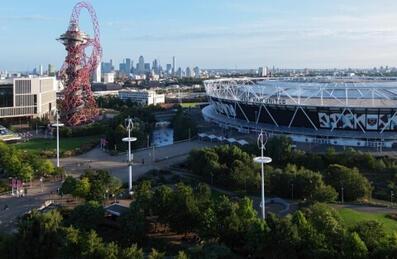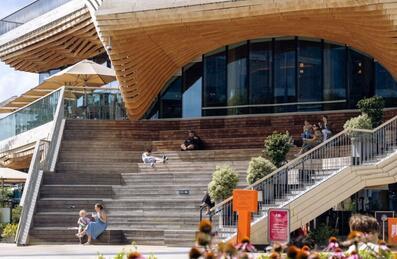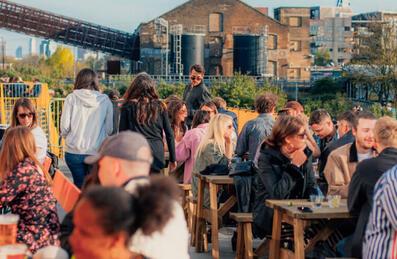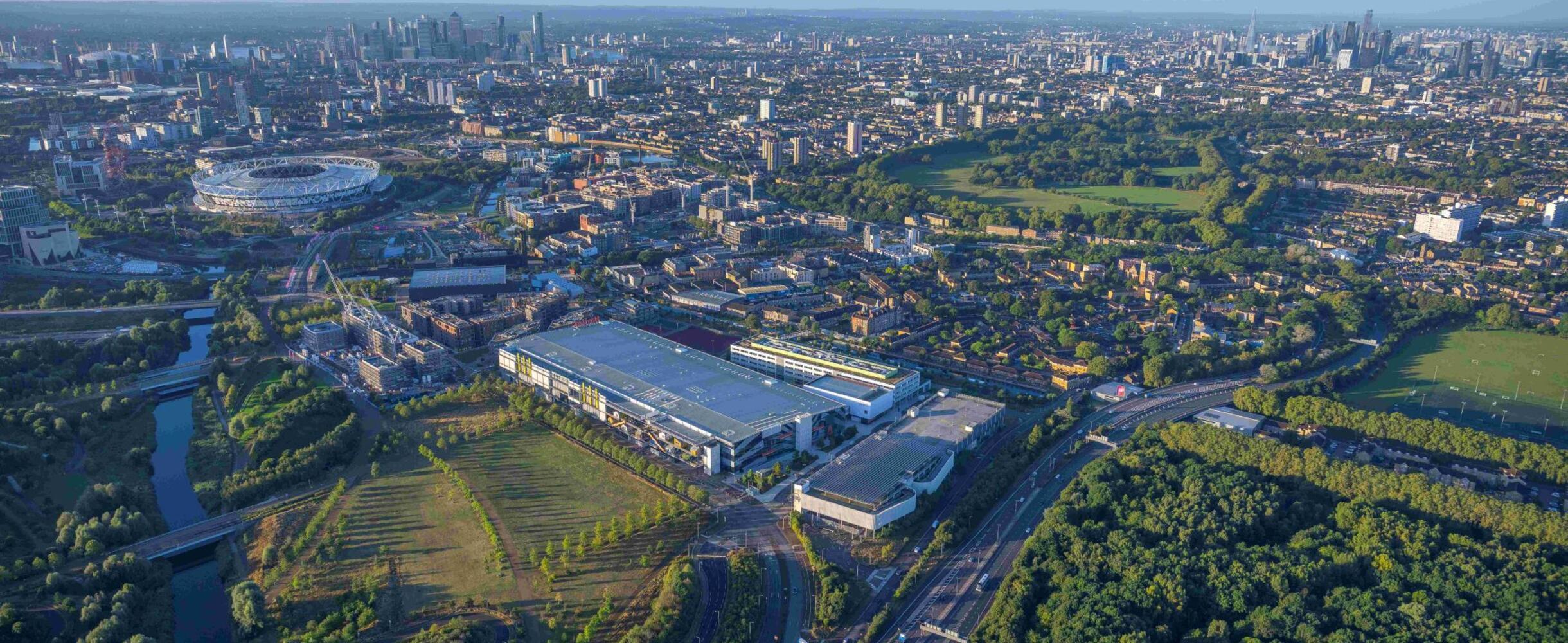
Popular Searches:
Keep up to date
Sign up today for exclusive offers and incredible experiences you won’t want to miss at Queen Elizabeth Olympic Park.
Sign up nowCarrying the Legacy Torch
Carrying the Legacy Torch
Story Business 29/10/2024
Rosanna Lawes, LLDC Executive Director of Development, reflects on her time leading one of the most complex development programmes this century and why the time is right to pass the baton on.
The 2012 Games was never about one summer of world-class sport, but so much more.
It showcased to the world what this part of east London could achieve, and the legacy ambitions set out in the bid and the preparation for the Games, underscored what could, and continue to be realised with east London becoming a vibrant new piece-of-city and the fastest growing part of the capital.
Since my first involvement in the bid to bring the Olympic and Paralympic Games to London, I’ve now reached the finishing line in this particular race and decided to move on at the end of March 2025 to explore other opportunities.
Having lived and breathed this project since its inception, I am delighted we have achieved such an outstanding place that is much lauded as one of the best Olympic and Paralympic legacies ever. But I have not done this alone, but with an amazing team, partners, colleagues and stakeholders, and huge talent across the built environment and development sector.
Given all that has been achieved, later phased neighbourhoods underway and East Bank opening, now is the right time to for me to move on as the London Legacy Development Corporation (LLDC) enters its next operational phase.
LLDC will soon transfer its planning powers to the boroughs, its remit will contract to the edges of Queen Elizabeth Olympic Park and it will focus on building out the remaining development sites and supporting partners to deliver and continue to build an inclusive economy. Its vision to deliver significant change and benefit for the people of east London remains unchanged.
It is also timely to reflect on my own learnings and experience gained from shaping and steering the creation of a new piece of city in one of the world’s great capitals.
It is a case study for how initial public sector investment can boost developer confidence and attract longer term private sector investment, turning an area suffering from decades of under investment and market failure into a market-leading place with significant delivery of new homes, employment space, jobs, and social infrastructure. Some personal reflections on how to deliver at scale.
A clear vision
What was true when I began this journey back in 2003 and still holds true today, is a strong and clear vision. I worked with the team proving to the International Olympic Committee the viability of the planned site in Stratford and that the associated land acquisition proposals were achievable in the incredibly short timescales available.
With the success of London’s bid in 2005, my team led land-assembly work for the 560-acre site. That included two Compulsory Purchase Orders to acquire land and relocating 240 businesses with 3,000 employees and more than 100 households. Included in the programme was a nationally significant infrastructure project to underground powerlines in two 6km long tunnels, removing 52 high voltage electricity pylons which criss-crossed the planned Olympic Park.
The purpose throughout was not just achieving the goals for the deadline of July 2012 to stage a wonderful summer of sport, but how the investment could be leveraged to drive benefits for London.
Keeping to that vision requires tenacity and resilience in the face of major obstacles be they turbulent economic cycles or disruption caused by the pandemic.
Consistent leadership
This links to the vision and has been a feature of this project; change in leadership but broad political alignment and commitment to the objectives has been key. Despite challenges and political and economic upheaval, that commitment to the long-term goals at all levels of government has remained consistent.
It has not been a process without challenge or intense scrutiny, but it has allowed a project of such significance to be delivered beyond the confines of short-term electoral cycles.
Motivated and talented people
None of this is possible without strong, confident, highly skilled and ambitious teams who can deliver time and time again. Projects on this scale are not the brainchild of one person. They require a finely-tuned organisation that is clear on the deliverables, has the required resources and the confidence to perform at the very highest level. Our colleagues know that we work to high standards, and we aim to deliver value in all that we do. We have achieved a considerable amount in collaboration and partnership with our partners, stakeholders, and the market.
Quality and sustainability
Our starting point has always been that people deserve to live and work in a well-designed place.
To do that we have the responsibility to deliver quality and sustainability working together to push ambitions. It is a careful balancing act between the public and private sector to maintain and indeed, raise standards, push innovation while delivering at pace. Our approach, to set out clearly our goals for delivery partners, has enabled us to deliver outstanding and award-winning developments.
The 880 homes at Chobham Manor, the first housing neighbourhood on the Park, are now complete and occupied. Built to the highest standards with sustainability at their core, the neighbourhood has quickly established itself as a new community. Our Post Occupancy Evaluation work not only tells us how residents feel about the place but also monitors buildings use and performance . The information has been invaluable to guide and shape our future housing developments. This learning and methodology has been published and adopted by other public bodies and the market.
Innovation and flexibility
A major strength of this regeneration project is its clear vision, but it is one that has proved to be flexible and adaptable to changing environments and allows for innovation.
The original masterplan for the post-Games park saw the development of a mixed use, residential led scheme. Those plans were challenged as to what would deliver best for local people and communities. The idea of East Bank a new culture and education district was created to establish a world-class destination and bring together outstanding organisations to showcase exceptional research, teaching, art, dance, history, craft, science, technology and cutting-edge design. As the Senior Responsible Officer, I led the project, to oversee the modification of the Park’s original masterplan to enable an innovative approach to placemaking. The scheme has seen two new campuses opened for UCL East and UAL’s London College of Fashion. Sadler’s Wells East will open to the public in February 2025 followed by the V&A East Museum and BBC Music Studios. An incredible opportunity for these institutions to connect and reach a young, diverse and incredibly talented local population, who will be the market makers, and innovators of the future.
I shall be leaving LLDC at the end of March 2025. It has been such a privilege to work on this project and to see it grow from the kernel of an idea to deliver an outstanding part of the city. I am so proud of what has been delivered and as I look forward to new opportunities for myself, I will watch with huge interest the next stage in the life of this very special part of London.







